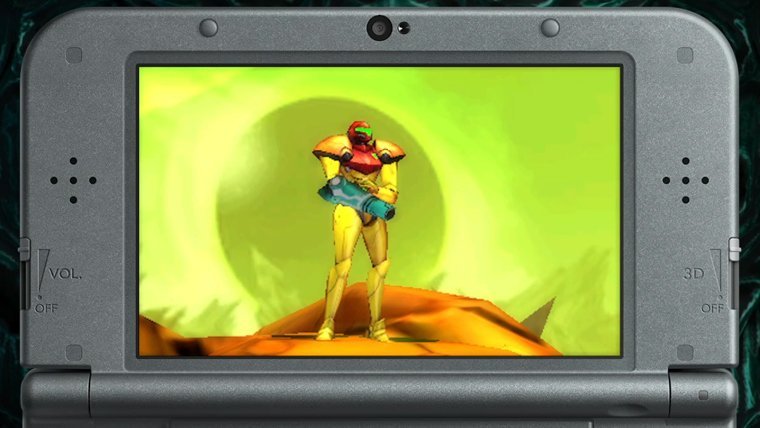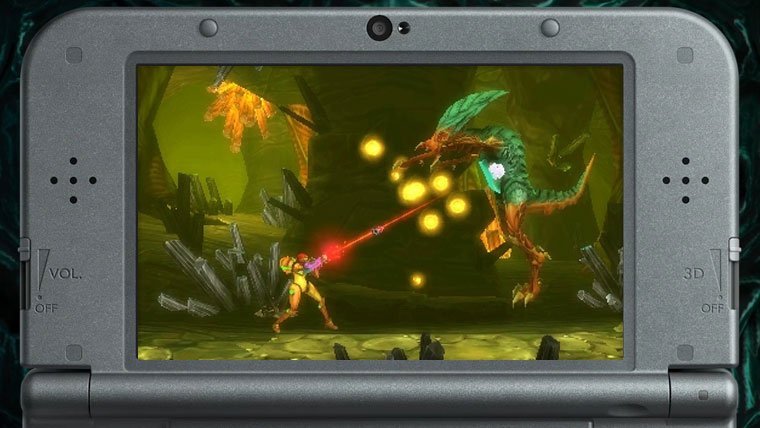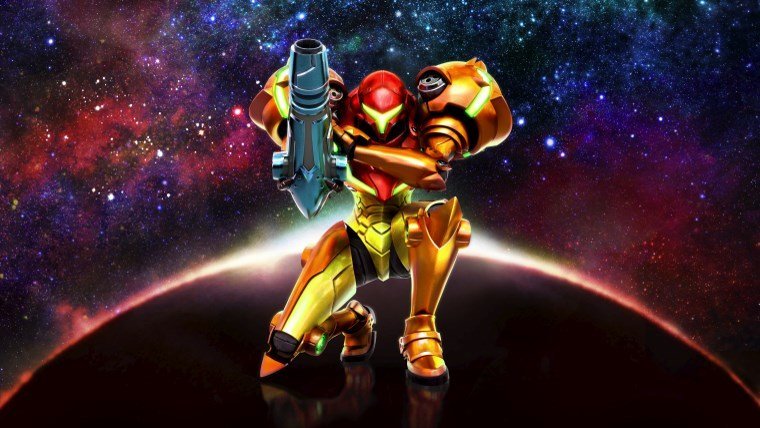There’s a reason that Nintendo is so well known for releasing sequels and remakes of their biggest properties. It’s because they have some of the best in video game history. Yet, while we’ve seen huge pushes behind Mario, Zelda, and other Nintendo franchises, Metroid usually gets left behind. That ended with the announcement of two new games, the first of which has finally arrived on 3DS. Serving as a remake of the Game Boy classic Metroid 2, Metroid: Samus Returns brings the series back to its roots of 2D action.
Metroid: Samus Returns is a complete reworking of the Game Boy original. The graphics are different, the gameplay is refined, but the story largely the same simple affair it was back in 1991. Samus, after defeating Mother Brain and her band of Space Pirates, has been tasked with the total destruction of the Metroid race. They pose too great a threat to the galaxy, so she heads to their home planet of SR388 to try to wipe them out. There she’ll once have to contend with local wildlife, who have grown strong and violent, as she gathers power ups and abilities in order to take out each and every Metroid.

There never was any explanation for why Samus is back to the basics at the beginning of Metroid 2, and there remains none for Metroid: Samus Returns. It’s not a big deal though because the result is that players get to enjoy the fun of this Metroidvania style adventure. Exploring SR388 is a joy, and finding a new ability or power up is always a blast. It seems like every nook and cranny has some hidden secret, whether its added missile capacity, or one of Samus’ important abilities, such as the morph ball and ice beam.
Backtracking is pretty much essential if you want to find everything, or even if you’re just doing the main quest and ignoring everything else. Samus will continually run into road blocks, which can be solved later by using some new ability she earned after a boss fight, or just by stumbling into the right room. This might frustrate players who aren’t as used to the mechanics of a true Metroidvania title, but everyone else will love it. Series fans will usually know exactly what power up they’re hunting for too, making for a fun treasure hunt every time they run into a new challenge that they can’t overcome with their current setup.

The gameplay of Metroid: Samus Returns is largely what you’d expect from the series. Samus explores the caverns of SR388 on her search for more Metroids to kill. Along the way she’ll find tons of enemies who want her dead. Her blaster is the most useful object at her disposal, but this game adds a new one. A quick melee attack can knock back charging foes, stunning them for an easy kill. This is new for the series, and it’s clear that the enemy designs have been shaped around this new mechanic, which can be annoying at first, but works well once the player gets used to using the attack.
The game overall is pretty difficult, though the difficulty curve can be a little inverted as you build up Samus’ abilities. One change that makes the game easier is the new Aeion system, which allows Samus to scan the environment for hidden objects or other things of interest, among other powers. This relies on a gauge, which is filled by orbs dropped when defeating enemies, so players can’t just spam the ability, but it rarely drops when used sparingly. This sort of optional difficulty is what Nintendo excels at, giving players the option to make the game easier when they get stuck, or the more hardcore can just ignore them.

Other changes are rather small. Metroid: Samus Returns adds touchscreen functionality for the bottom screen, but it’s nothing too intensive. The bigger change is being able to fire in all directions, standing in one spot by holding the L button. This is essential for some combat encounters, as firing at enemies who are off screen will help clear areas before entering them. This can get a little old though, as you find yourself repeating the same pattern of walk a few feet, spot an enemy ahead, plant yourself and fire in their general direction until enough shots hit to take him out. Once you power Samus up enough this will calm down though.
Visually the series has never looked better, at least in its handheld form. 3D graphics work well in 2D, especially when you actually turn on the 3DS’ titular feature. The game’s environment may not be as varied as some might like, but it all looks good on the 3DS. There is a little feeling of loss that this game isn’t on the far more powerful Switch, but for the tens of millions of gamers with a 3DS wondering whether Nintendo would continue supporting the device, this is a good answer.
The Verdict
The whole package comes together to create another amazing 2D Metroid experience. Metroid: Samus Returns stands alongside Zero Hour and Fusion as another fantastic handheld entry for this almost always great series. When deciding whether or not Metroid: Samus Returns is worth checking out just think about these two things. There’s a reason that the Metroidvania genre is so popular these days, and there’s a reason why this series is featured in the genre’s name. While this isn’t Samus’ greatest adventure, it is still a very good one.











Published: Sep 12, 2017 07:00 am